The very reason nonfiction is so fascinating is what makes it really hard to write a short introduction here. Anything and everything can make a great topic for a nonfiction book, whether the book is written as a memoir, a biography, a scholarly work or as pure entertainment.
This fall, we've got books about the famous — famous real people (Jimi Hendrix, Spike Lee, Terry Fox, Joan Didion) and about the fictional famous (Nancy Drew). We've got books about real people who aren't really famous (Zainab Salbi, who grew up in the shadow of Saddam Hussein) and about real places (Cuba's Tropicana Nightclub, New Orleans before the floods came).
And two authors who made their marks with nonfiction books have returned with new works, taking their original topic and twisting it, changing it. Barbara Ehrenreich goes undercover not as a minimum-wage worker, but as an unemployed white-collar worker. And Mary Roach, who explored what happens to our body after we die in the hilarious "Stiff," now checks out the stage of our souls in "Spook." The dead, the living, the famous, the regular Joes, they're all here. —Gael Fashingbauer Cooper
Undercover and unemployed
Like Morgan Spurlock of "Super Size Me" and TV's "30 Days," Barbara Ehrenreich doesn't just report on a subject from afar. She throws herself into it, as with her best-selling "Nickel and Dimed," in which she went undercover as a waitress, Wal-Mart worker, cleaning lady and nursing-home aide to discover how tough it is to survive in low-wage work. Now she does it again in "Bait and Switch: The (Futile) Pursuit of the American Dream" (Metropolitan Books, $23).
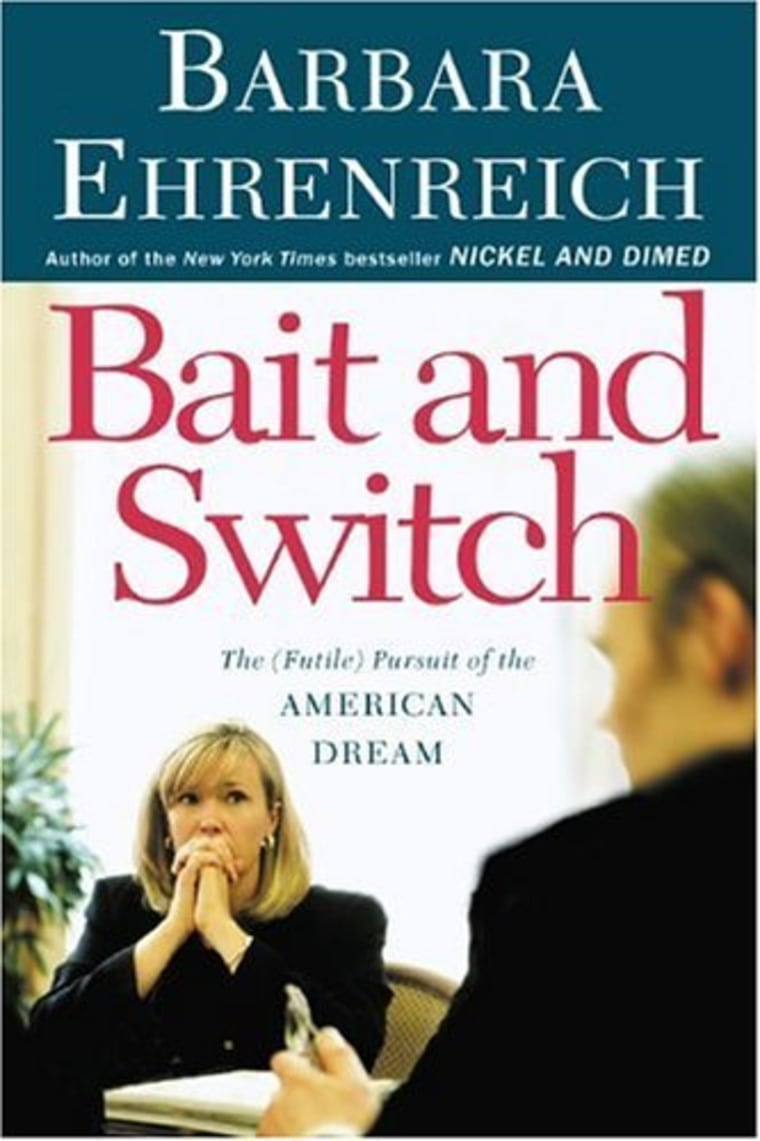
This time, Ehrenreich tackles the role of a white-collar worker who finds herself unemployed at mid-life. She enrolls in career coaching programs that mix New Age gobbledygook with "Who Moved My Cheese?"-like business buzzwords. She takes personality tests that are explained to her via Elvis and "Wizard of Oz" dolls. She gets her colors done, her resume reworked. Yet in the end, after seven months of hunting, the jobs she's offered are one selling Mary Kay Cosmetics, and a commission-only sales job from AFLAC. Neither job offers a salary, benefits, or even a set workplace.
This book isn't as easy to relate to as "Nickel and Dimed." We've all been unemployed, but not everyone has gone after a new job with the help of these services, which makes Ehrenreich's struggles feel a bit removed. Some may argue with her methodology — since she's playing a role, she's unable to throw herself wholeheartedly into the job search, using past personal contacts and successes. But she still manages to expose the tough path of the midlife job-hunter, and the ridiculous ways in which the desperate can be exploited and shaken down for their dwindling cash reserves. And as in "Nickel and Dimed," Ehrenreich is a charming tour guide, witty and sharp, often laugh-out-loud funny, and never preachy or dull. —G.F.C.
Shadow of SaddamZainab Salbi grew up knowing Saddam Hussein, came to Chicago for an arranged marriage, ultimately married for love, founded a nonprofit agency for victims of rape, nursed her ailing mother, and has now written a book. In “Between Two Worlds: Escape From Tyranny: Growing Up In The Shadow Of Saddam” (Gotham, $26),she offers a thoroughly absorbing, personal tale.
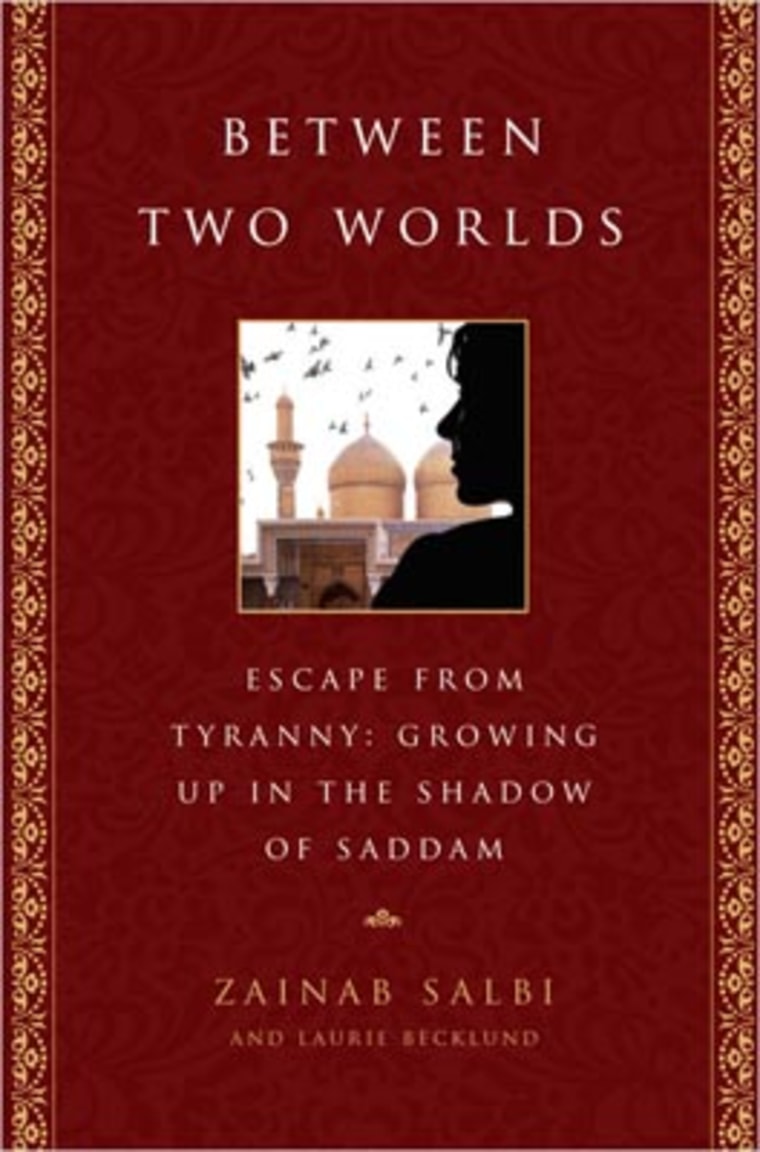
Salbi’s portraits of her parents are especially wrenching, and are remarkably even-handed given the painful choices she saw them make. This is primarily a family story, and the intrusion of Saddam Hussein into Salbi’s home life never stops seeming sadly disruptive, just as it evidently was for her.
An autobiography of a life as challenging as Salbi’s is delicate, as it can easily lapse into pathos. Salbi never makes that mistake, as her contemplative, frank style — she is not afraid to use straightforward, surprisingly effective phrasing like, “I really, really, really wanted to go home” at just the right moment — keeps the story from getting dry or self-conscious.
Even if it did not contain desperately needed wisdom about sorely misunderstood world events — which it does — Salbi’s story would make for a great book. As it is, it also makes for an important book. —Linda Holmes
Get a clueNancy Drew will always be a treasured friend to many women, whether they first met her in the 1930s, 1950s, 1980s or anywhere in between. The titian-haired teen detective didn't ever let romance (sorry, Ned) or interpersonal squabbles get in the way of solving her latest mystery. Attempts to revive Nancy for a new generation seem to have stalled, but her grown-up fans can comfort themselves with Melanie Rehak's wonderful "Girl Sleuth: Nancy Drew and the Women Who Created Her" (Harcourt, $25).
Most Nancy fans know that author Carolyn Keene was just a pen name used by the Stratemeyer Syndicate, the series-book factory of Edward Stratemeyer.
Edward gave Nancy her birth (he originally wanted to dub her Stella Strong), but it was two women who carried the torch after he died: His daughter, Harriet, and Mildred Wirt Benson, author of most of the Nancy books.
"Girl Sleuth" intertwines their stories in a fascinating tale that touches on early feminism, the changing role of women in the 20th century, and more. Fans will especially enjoy specific information about how the plots and characters evolved over time — and were later rewritten to eliminate early racism.

It would have been easy for Rehak to present Harriet and Mildred as perfect, and it's to her credit that they come off human and fallible. Harriet cuts Mildred's pay and fights with her sister, Edna, over the business. Mildred isn't too thrilled with being edited, and is even less pleased when Harriet tries to take credit for her work.
If the book has a weak spot, it's that it's never quite clear why Nancy Drew (and the Hardy Boys) triumphed over Stratemeyer's less popular series, which didn't prove to have the staying power of the teen detectives. But then again, if you're reading "Girl Sleuth," you probably don't need a detective to solve that mystery. —G.F.C.
The ache of hungerSometimes, the stranger the topic, the more captivating and surprising the book. It's not likely that many folks browsing through the local bookstore would think "I'd really like to read a book about the history and science of hunger," but the resulting volume surprises with its readability. Sharman Apt Russell's "Hunger: An Unnatural History" (Basic Books, $24), looks at the sensation of hunger with a fresh and fascinated eye.
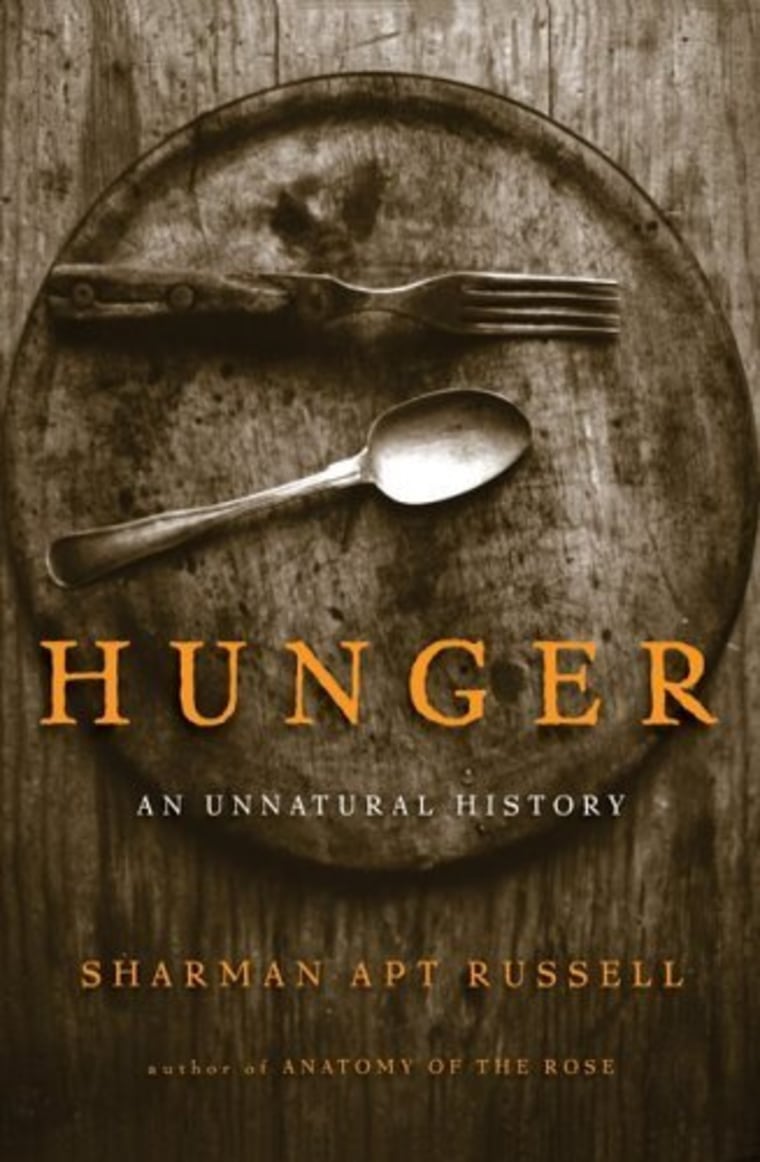
None of us do not know hunger, though our modern world and our incomes may allow us to hide it away. Apt Russell traces exactly what happens in our bodies when we hunger, when we eat, when we fast. She examines famous hungers — Gandhi and the Irish hunger strikers who did not eat for a cause, the poor starved people trapped in the Warsaw ghetto, healthy Minnesotans who willingly starved themselves for a university experiment. Not even her science-based information is presented in dry textbook form, all is related to feelings, to real people, to hunger's unique pains and occasional pleasures. A chapter on anorexics and the unusual challenges they present is fascinating, if unable to ultimately explain the disorder.
The book could only end in one way, by looking at the power that hunger still has over our world today, Apt Russell presents the facts: Most people who live with hunger are in East and South Asia. About 50 percent are small farmers. Vulnerable groups, children and pregnant women and the HIV-stricken, cut across all countries, all groups. She interviews those whose job it is to look the world's hunger in the face, every day, and they present possible solutions. It's hard to not come away from the book with guilt for the food we enjoy, but also with hope. —G.F.C.
Letters from before the floodRob Walker wrote "Letters from New Orleans" (Garrett County Press, $13) as a celebration of the city where he and his girlfriend lived for three years. In the wake of the city's evacuation after Hurricane Katrina, it would be easy to read it as an elegy, to a place and a way of life that may never return, not as it was. Somehow I think Walker, and the New Orleanians he writes about, would rather it be read still as a celebration.
The slim book is exactly what its title says: Letters Walker wrote, and distributed online, as he discovered the charms and quirks of his new city. It starts slow, and you never really get to know Walker or his girlfriend (who never gets a name, just "E"). But once he delves into New Orleans' culture and character, you're reminded why the city is such a treasure. (Although he feels he must diss such cities as Seattle, Boston, San Francisco and others in the process, hmmph.)
It's easy to find foreshadowing of the Katrina devastation: The second page of the book mentions hurricane danger, and later, Walker takes a walk on one of the cities' levees. He also doesn't shy away from discussing the city's omnipresent poverty, and discusses the surprising election of Mayor Ray Nagin, who became the devastated city's face in the storm's aftermath, literally begging for aid. The seeds for the hurricane's aftermath were all there, if one had known to look.
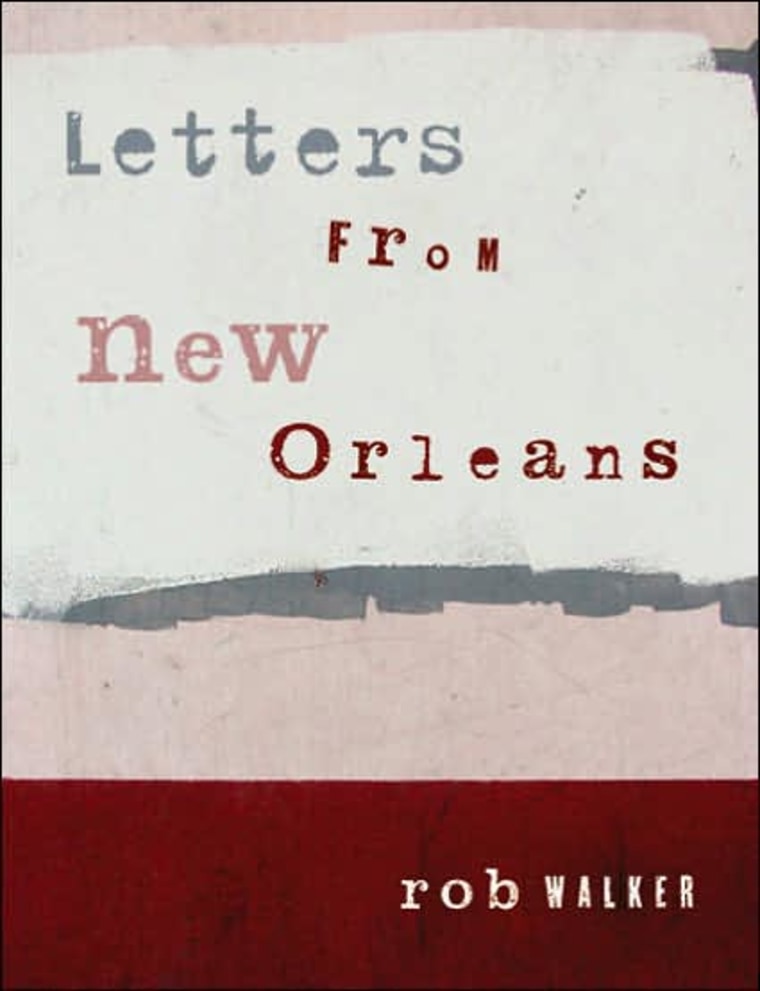
Sure, much of the book focuses on the city's well-known customs and charms, from fried poundcake to jazz funerals. But Walker doesn't give just the tourist bureau's view of the Big Easy. He's as mystified as any non-local would be by the many Mardi Gras Krewes and balls, and blunt about how the city is not one that can afford such an aristocracy. He relates the story of the crumbling Desire Street public-housing complex and the few families who still refuse to leave it. Yet he himself is dumbstruck when a visitor pronounces New Orleans "a very segregated city."
It's almost impossible for one person to get a complete view of the city, and Walker certainly doesn't provide that. But the city's personality shines through, and reminds us why, in the words of the old song, we now know what it means to miss New Orleans. —G.F.C.
Through a glass darklyThe legend of Jimi Hendrix, unfortunately, has collapsed over time into a play in two parts. In Act One, Hendrix sets his guitar on fire and plays “The Star-Spangled Banner.” In Act Two, he dies of a drug overdose two weeks before Janis Joplin.
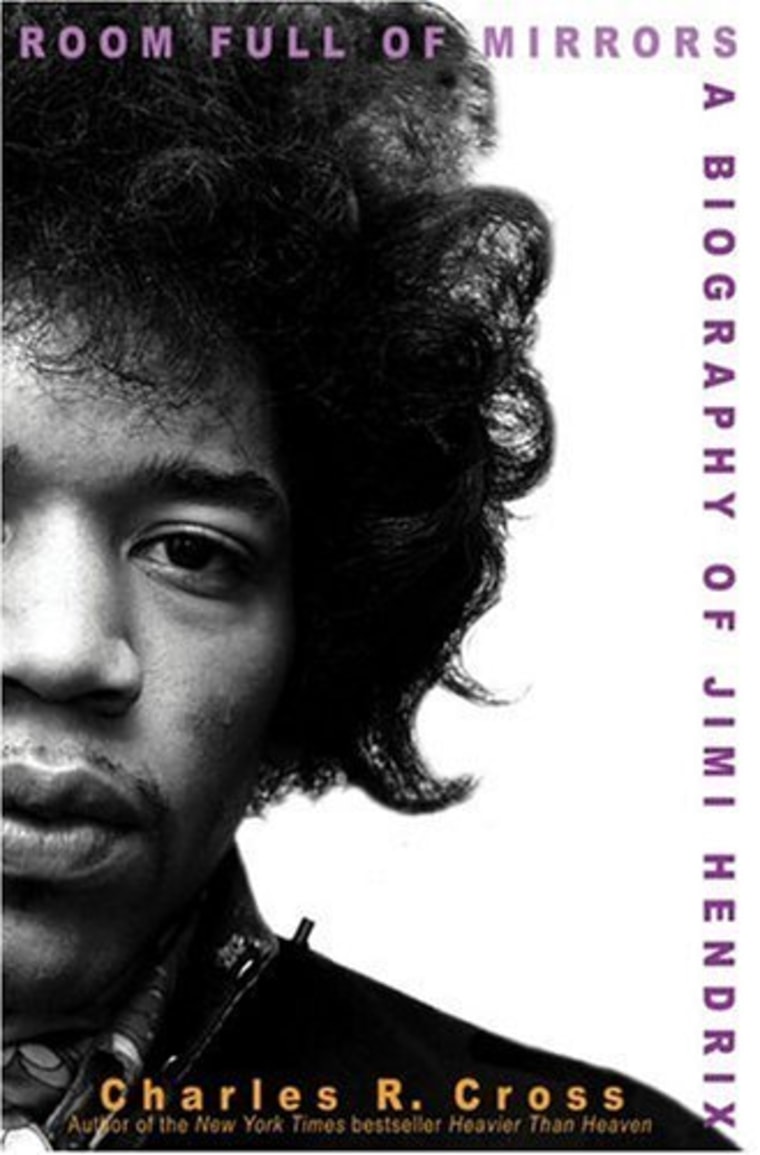
Ultimately, the book is a little too gauzy and self-consciously lyrical in its treatment of Hendrix. It isn’t quite brave enough to let readers draw their own conclusions, frequently making the mistake of giving a piece of information — particularly an unflattering one — and then explaining how reaction to it should be tempered by other things we already know.
Still, Cross has written an accessible and readable story with an abundance of input from people Hendrix knew. It’s not the most balanced biography, but it’s worth reading nevertheless. —L.H.
A biography that sees both sidesThe interesting conflict brought to light by “Spike Lee: That’s My Story And I’m Sticking To It” (W.W. Norton, $26) is that it may well make you dislike Spike Lee for being something of an arrogant, self-righteous know-it-all, but admire him for participating in an authorized biography that isn’t afraid to make him look bad.
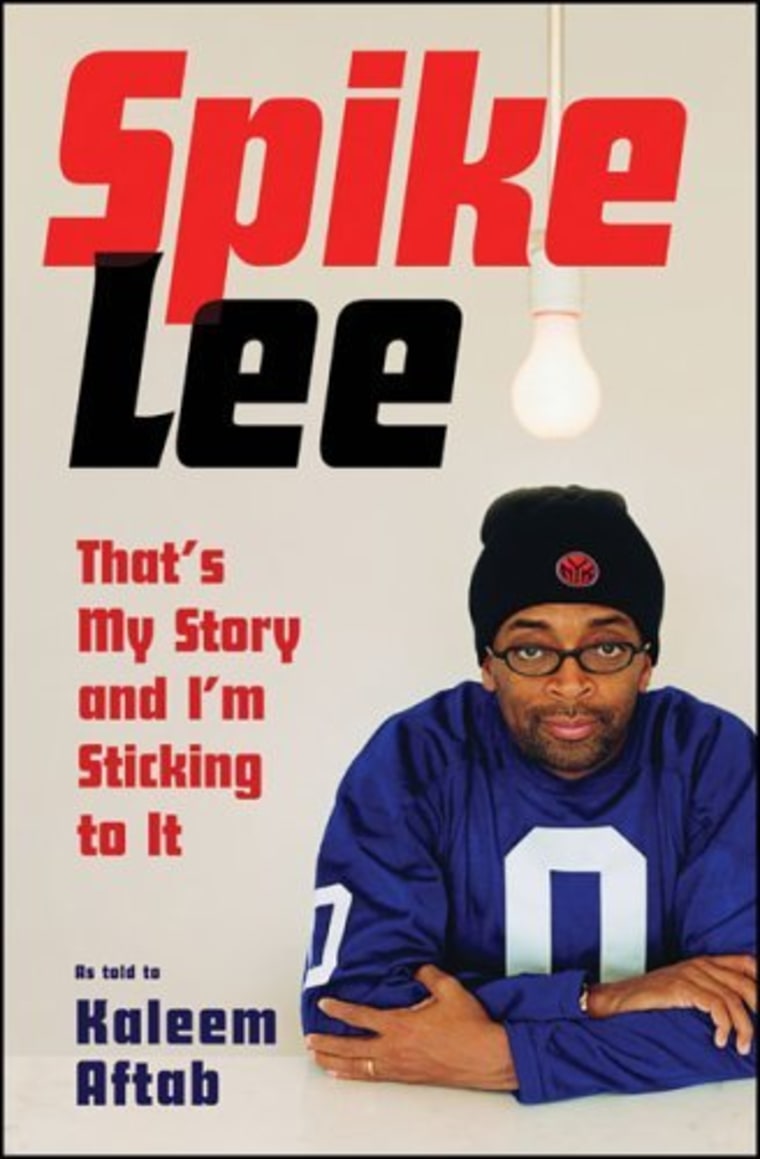
While writer Kaleem Aftab consistently credits Lee for artistic successes like “Do The Right Thing” and “She’s Gotta Have It,” he frankly addresses the failings of lesser-known films like “Girl 6.”
And on a more personal level, Lee’s struggles with both female characters and the actresses who portray them are a recurring theme, as are his frequent rifts with old friends and colleagues.
Similarly, the book's structure, which devotes a chapter to each of Lee’s films or a related set of films, wisely avoids the trap of glossing over his less successful work. A string of paeans to “Do The Right Thing,” after all, isn’t very enlightening at this point, but studying how Lee approached more unevenly received movies like “Mo’ Better Blues” gives a reader something new.
This is biography as it should be done: scholarly and analytical, rather than lionizing or voyeuristic. —L.H.
Don’t fear the reaperMary Roach's 2003 book "Stiff: The Curious Lives of Human Cadavers" allowed readers to satisfy their curiosity about what happens to our physical bodies after we die. It's only natural that her next book, "Spook: Science Tackles the Afterlife" (Norton, $25), does the same for what happens to our souls.
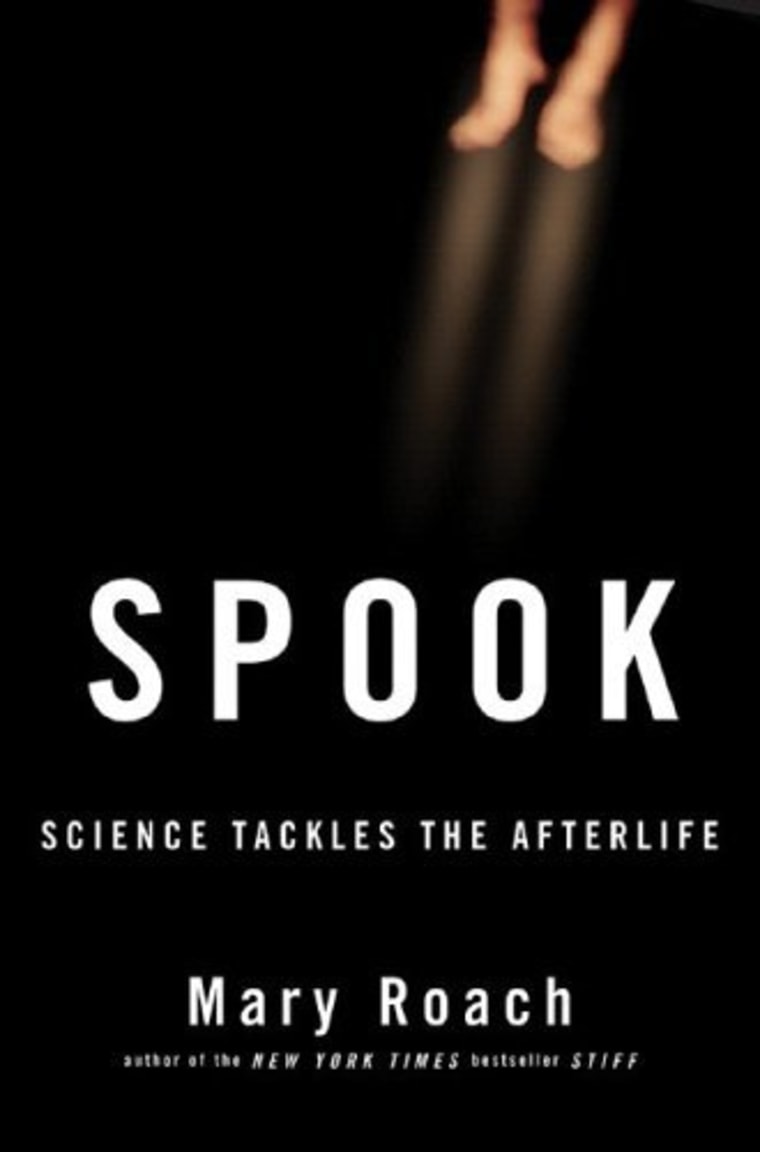
It's not an easy task, because of course no one has come back to tell us about the world beyond. So Roach explores reincarnation, spirit voices, the weight of the soul and the weird world of ectoplasm (a kind of Silly String that old-time mediums claimed to exude while in trances). She visits an operating room that is specially set up to test for any near-death experiences. Don't expect a rundown here of what various faiths believe happens to us, Roach is charging at her subject from a purely scientific point of view.
And the process is hilarious. Roach's self-deprecating humor is reminiscent of columnist Dave Barry. Of a supposed recording of the sounds of the long-dead Donner Party, she reports "To me it did not sound like communications of any sort, except possibly the sort exchanged between turkeys." After reading pages of supposed beyond-the-grave chatter, she remarks "the dead are surprisingly poor conversationalists."
She thinks the things you and I would think, were we running around India trying to figure out if a little boy was really the reincarnation of an electrocuted factory worker. Like Fox Mulder, she wants to believe, but she's nobody's fool. In the end, she may not come up with any answers, but the way she asks the questions is worth it. —G.F.C.
Remembering Terry FoxTo create "Terry," (Douglas & McIntyre, $23) Douglas Coupland pored through the Terry Fox Foundation's storage lockers (some packed to the ceiling with get-well cards), piecing together this touching scrapbook of the young Canadian's life.

In 1980, Terry ran his fundraising "Marathon of Hope" two-thirds of the way across the breadth of his native country, on a prosthetic leg that replaced the one that he had lost to cancer. Twelve miles east of Thunder Bay, he was stricken with chest pain from fresh tumors in both lungs, and could not go on. He perished soon afterward at 22.
In this volume intended for all ages, Coupland's tone is gentle, yet never condescending. The illustrations are a patchwork of family pictures, news clippings, and original photographs, art-directed by Coupland, of the artifacts of Terry's life: the baseball cap he wore after losing his hair to chemotherapy, the jug of water he took from the Atlantic Ocean with the intent of someday pouring it into the Pacific. These last are illuminated softly, but sharply focused, making them appear simultaneously precious yet tangible. Most moving are the letters sent Terry from the whole of the country, such as a sheaf of a schoolgirl's notebook paper with "I love you, Terry," written out 3,339 times (once for each mile he ran.) For both those who remember Terry's historic trek and those new to his story, it's a heartbreaking tribute. —K.R.
In memoriamMere words often can’t do justice to vast subjects like love and grief, but Joan Didion brings the language as close as it’s possible to in “The Year Of Magical Thinking” (Knopf, $23, to be published in October).
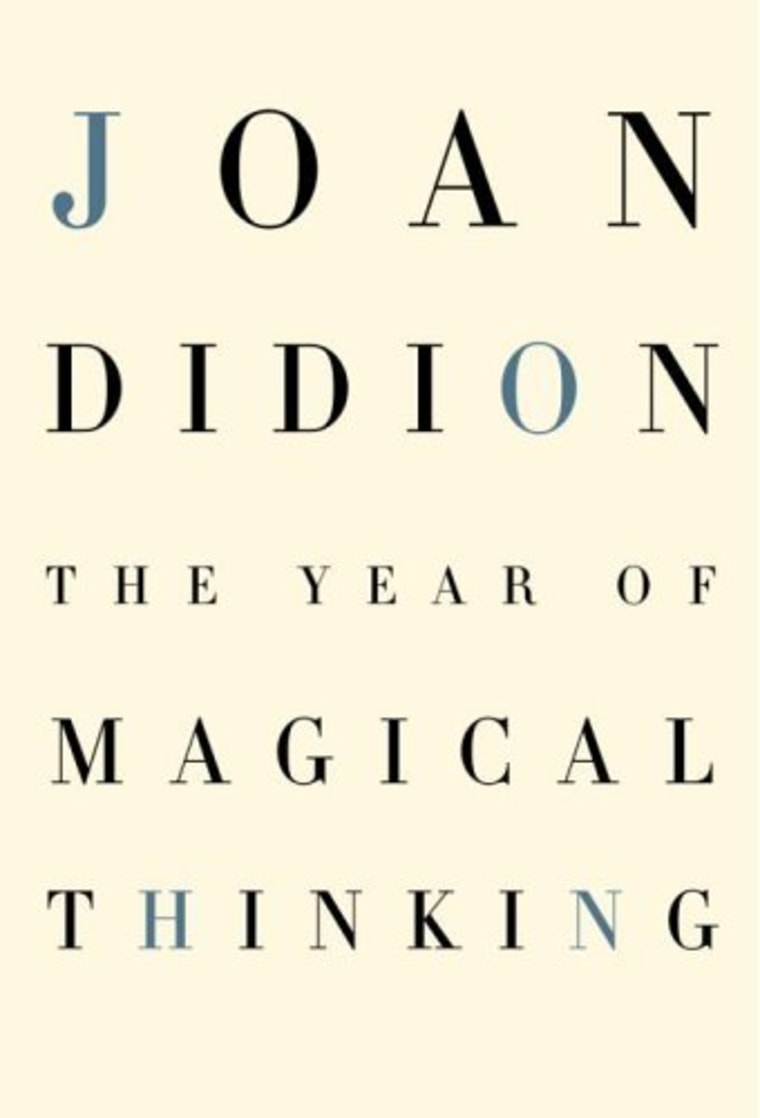
Didion wrote the book in what she calls “an attempt to make sense of the period that followed” the sudden death of her husband, writer John Gregory Dunne, and the simultaneous life-threatening illness of their adult daughter. (Didion's daughter, Quintana Roo Dunne Michael, 39, died last month, just before the book was to be published.)
Didion’s trademark remote Hemingway-esque diction is perfect here; her prose is a flawless reflection of the numbness and dislocation of grief. But it isn’t a depressing book, or entirely sad; it’s more of a haunting melody.
Didion talks about forcing her mind to avoid memories of her husband, and memories adjacent to him, but she recalls them anyway, and when she remembers Dunne standing in a swimming pool reading a book, or the way he used to lampoon college singing groups, the reader gets a series of tart, sweet snapshots of their shared life. It’s a lovely elegy, full of loss but also of comfort and remembered happiness. —Sarah D. Bunting
Nightclub nightsThe story of twentieth-century Cuba is so dense that addressing it in a single book is nearly impossible. In “Tropicana Nights: The Life And Times Of The Legendary Cuban Nightclub” (Harcourt, $26), journalist Rosa Lowinger teams with Ofelia Fox, widow of Tropicana owner Martin Fox, to tell both the Foxes’ story and the story of Cuba through the lens of a single, successful, quite possibly Mafia-infiltrated business.
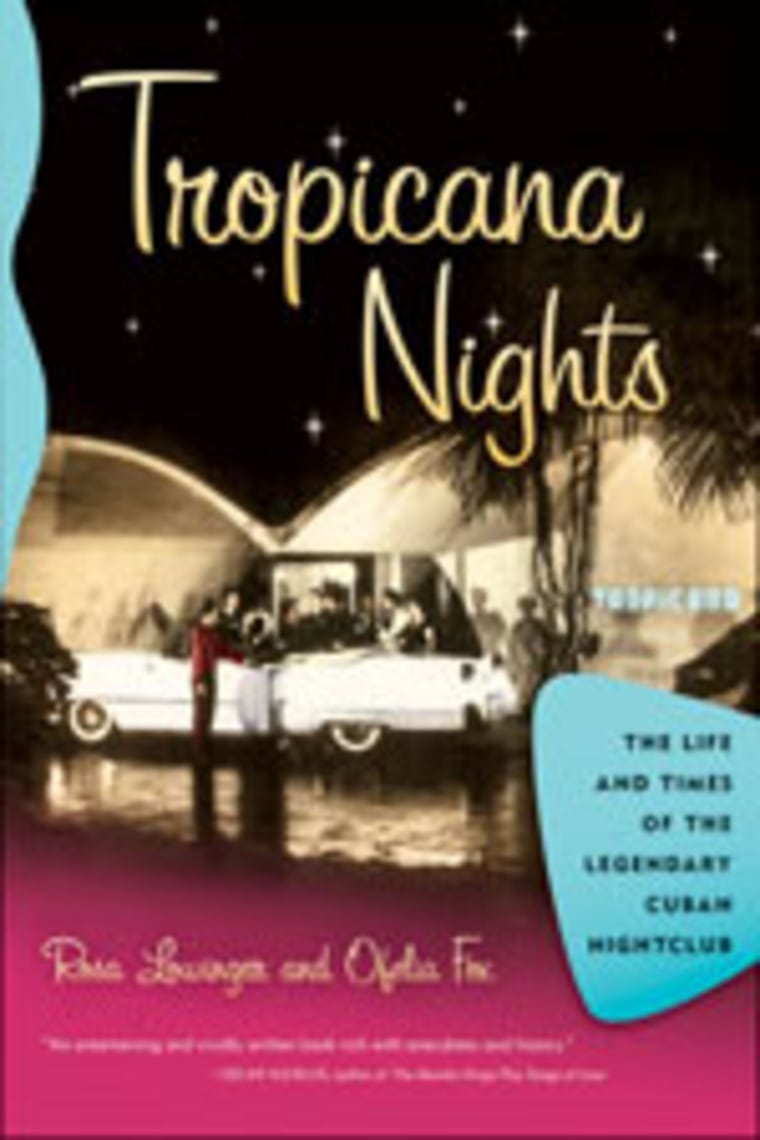
While she focuses on Tropicana, Lowinger also spins the contemporary story of homey visits with Ofelia and other figures from Tropicana’s history, both in California and in Cuba. At times, it is these scenes in which aging characters reminisce that are the most compelling. Lowinger’s occasional clashes with Ofelia over Tropicana’s possible mob ties and Castro himself reveal Ofelia’s stubbornness and loyalty.
Unfortunately, the book suffers at times from an abundance of poorly chosen detail. There are far more names dropped than a reader will ever remember, and indeed, many never come up again. Some of Lowinger’s many tangents are colorful, but others are tiring. Not only does this make the book feel long, but the avalanche of facts is a distraction.
Aside from that, however, “Tropicana Nights” is fresh and entertaining, both as biography and as history. —L.H.
Gael Fashingbauer Cooper is MSNBC.com's Books Editor. Linda Holmes is a writer in Bloomington, Minn. Kim Rollins is a writer in Seattle. Sarah D. Bunting is a writer in Brooklyn.